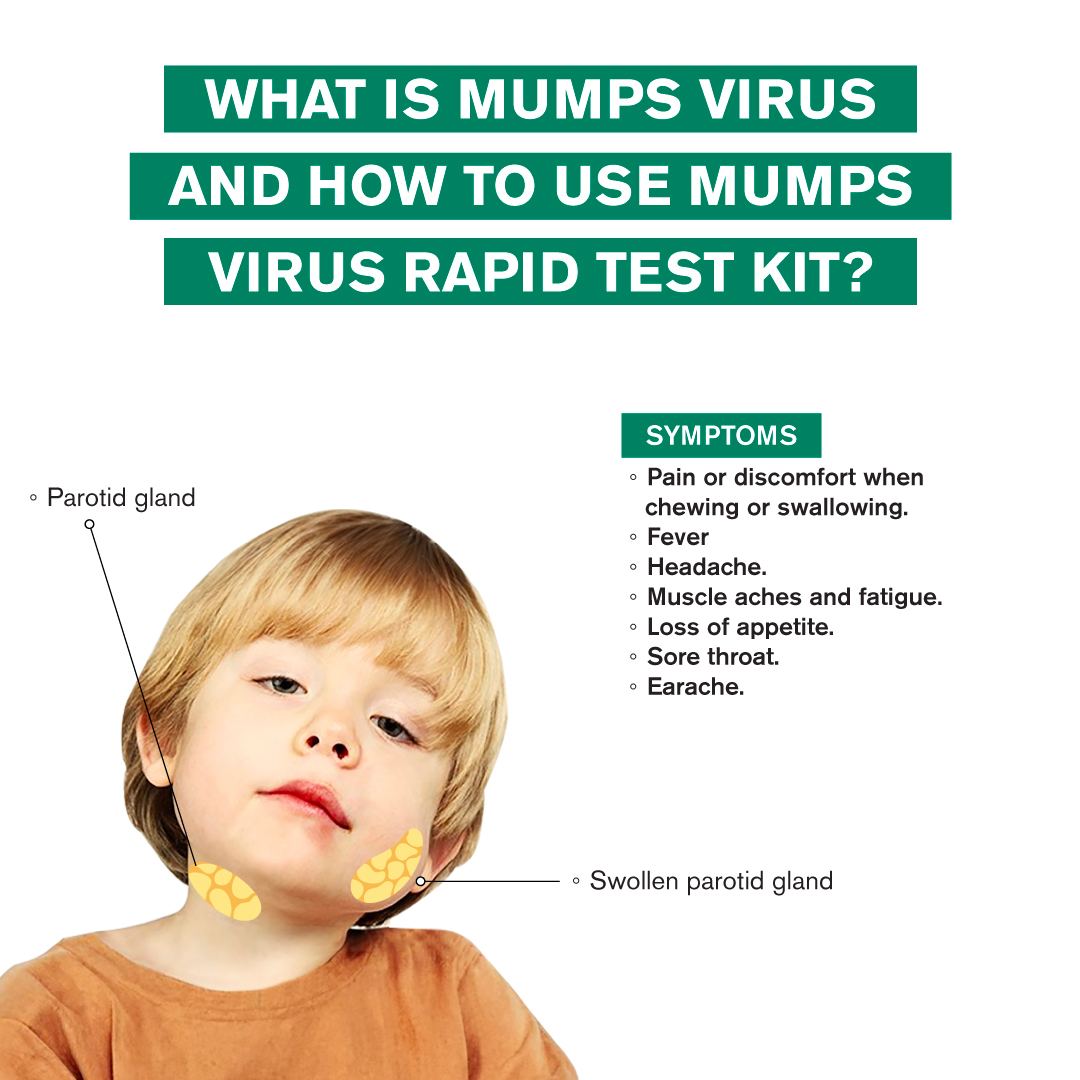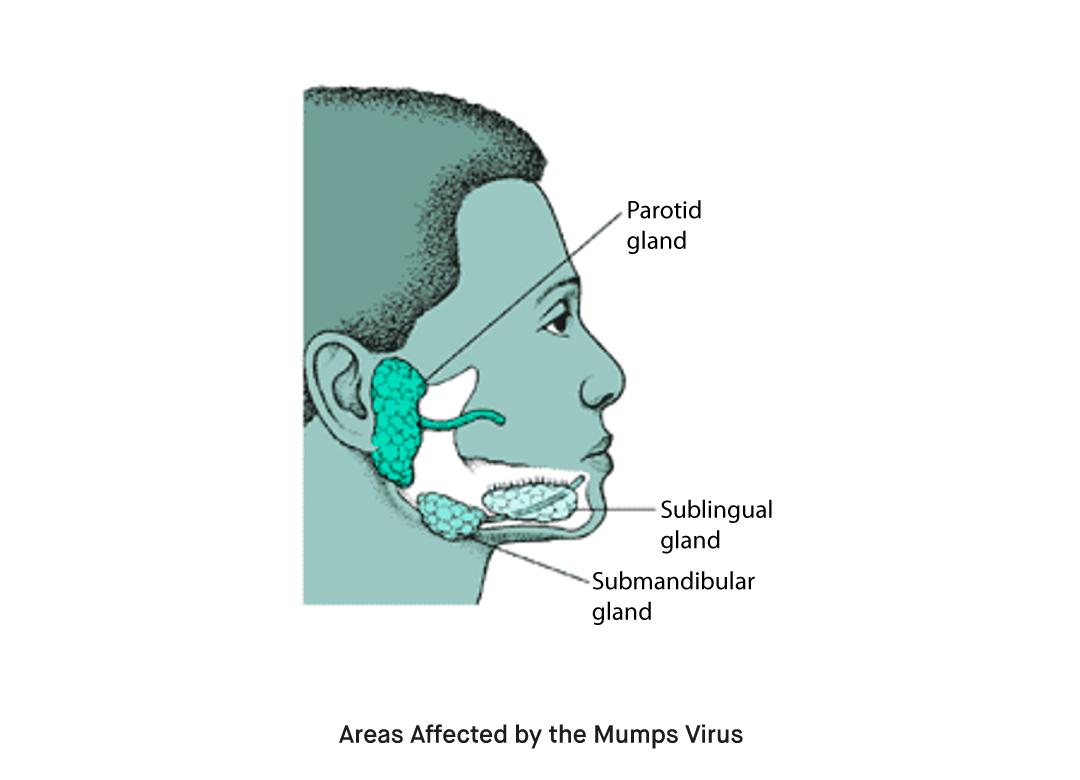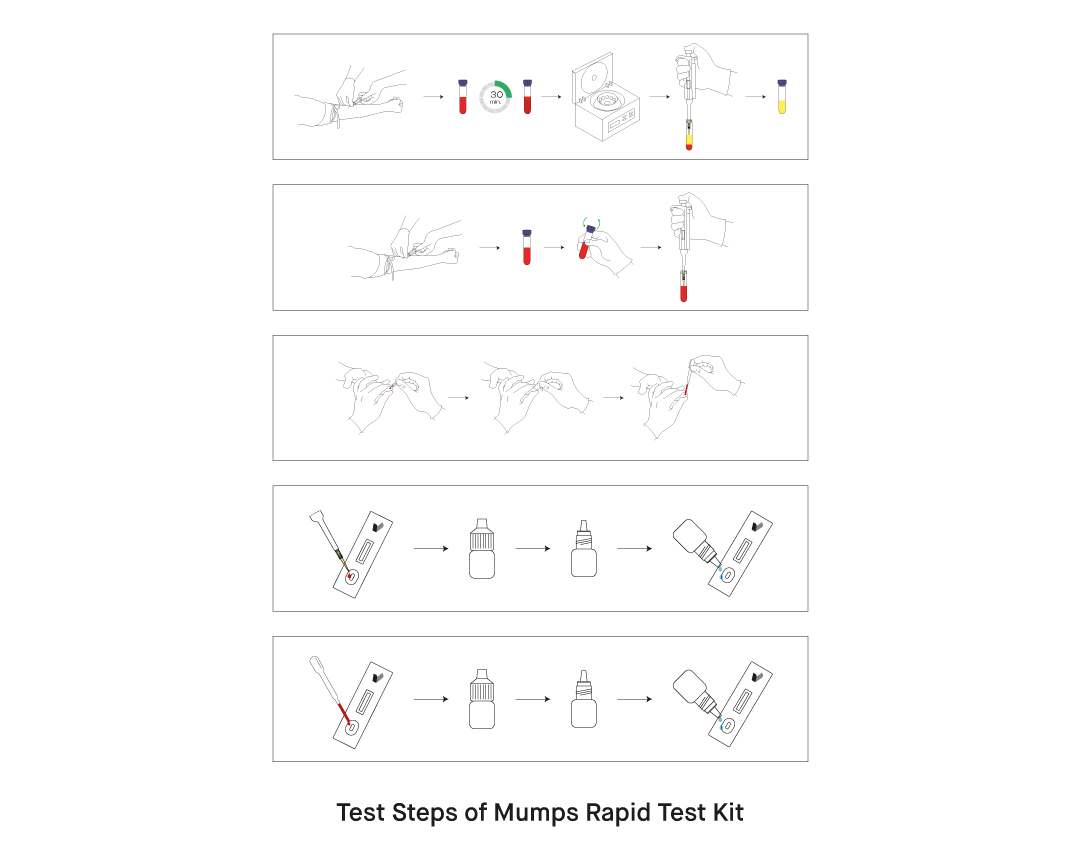
Mumps is a viral infection primarily affecting the salivary glands, causing painful swelling and potential complications. In recent years, mumps outbreaks have raised concerns worldwide, highlighting the significance of early detection and prevention. In this article, we will delve into the critical aspects of the mumps virus, its symptoms, and transmission and explore the role of a mumps virus rapid test kit in diagnosing this infectious disease swiftly and accurately. Whether you’re a healthcare professional, a concerned individual, or simply curious about this viral infection, join us as we unravel the mysteries surrounding the mumps virus and equip ourselves with the knowledge needed to combat its spread effectively.
What is Mumps Virus?

Mumps is mainly recognized as a frequent viral illness that affects children and is characterized by parotid gland enlargement [1]. Mumps virus is an enveloped RNA virus from the Paramyxoviridae family. It was a common childhood disease worldwide before the development and use of vaccines. However, it is still a significant health problem in third-world countries [2]. It primarily affects the salivary glands, leading to swelling and inflammation. Mumps is highly contagious and can spread through respiratory droplets, direct contact with infected individuals, or contaminated surfaces. The virus primarily targets children and young adults but can affect individuals of any age. Although mumps vaccination has significantly reduced the incidence of this viral infection, outbreaks can still occur, especially in communities with low vaccination rates. Prompt diagnosis and isolation of infected individuals are crucial to prevent the further spread of the virus.

Rapid diagnostic tests have been developed to aid in the identification of mumps cases. These mumps virus rapid test kits provide quick and accurate results, allowing healthcare professionals to diagnose the infection and implement appropriate measures promptly. By understanding the nature of the mumps virus and utilizing effective diagnostic tools, we can effectively combat the spread of this infectious disease and protect the health of individuals and communities.
What are the Symptoms of Mumps Virus?

The symptoms of mumps virus infection typically appear about 16 to 18 days after exposure to the virus. However, it is important to note that not all infected individuals exhibit symptoms. When symptoms do occur, they can vary in severity. The common symptoms of mumps virus infection include:
Swelling and tenderness of one or both parotid salivary glands (located below and in front of the ears), resulting in a puffy or swollen appearance of the cheeks.
- Pain or discomfort while chewing or swallowing.
- Fever, often low-grade but can occasionally be high.
- Headache.
- Muscle aches and fatigue.
- Loss of appetite.
- Sore throat.
- Earache, particularly when chewing or swallowing.
- Painful swelling of the testicles in males (orchitis) may be accompanied by fever, nausea, or abdominal pain.
- Painful swelling of the ovaries in females (oophoritis) may cause abdominal pain or tenderness.
- In rare cases, complications such as meningitis (inflammation of the membranes surrounding the brain and spinal cord), encephalitis (inflammation of the brain), pancreatitis (inflammation of the pancreas), or deafness may occur.
Not all individuals infected with the mumps virus will experience all of these symptoms, and some may only have mild manifestations. Additionally, some individuals infected with the virus may be asymptomatic, meaning they show no noticeable symptoms but can still spread the virus to others.
If you suspect you or someone you know may have mumps, seeking medical attention for diagnosis and appropriate management is essential.
What is the Mumps Virus Rapid Test Kit?

Most instances of mumps are detected clinically without the need for any virological tests. However, some instances of the disease may be brought on by other diseases or secondary vaccination failure (SVF). It needs a sensitive, focused, and quick diagnostic procedure to identify these problems [3]. The Mumps Virus Rapid Test Kit is a diagnostic tool designed to detect the presence of mumps virus antigens or antibodies in the sample of a patient, typically saliva or blood sample. It provides a quick and convenient method for healthcare professionals to diagnose mumps infection accurately.
The rapid test kit usually contains a test cassette or strip containing specific reagents. These reagents react with the mumps virus antigens or antibodies present in the sample, producing a visible signal (such as a colored line) indicating a positive mumps infection result.
This test kit uses a colloidal gold immunochromatography assay; the colloidal gold-labeled mouse-anti-human IgM is coated on the nitrocellulose membrane. If the sample is a positive specimen, the mumps virus IgM antibody in the specimen is combined with the colloidal gold-labeled mouse. Due to chromatography, the anti-human IgM binds to form an immune complex, and the complex with the sample flows forward inside the nitrocellulose membrane. When the complex passes through the T line, it binds with the encapsulated mumps virus antigen to form the complex, agglomerate, and display a colored line. The remaining colloidal-gold labeled mouse-anti-human IgM and the anti-mouse IgG antibody in the C-line are bound and agglutinate for color development. If the sample is negative, it means it does not contain mumps virus IgM antibody, resulting in the inability to form an immune complex, and color only appears in the C line.
How to Use Mumps Virus Rapid Test Kit?

Rapid test kits play a crucial role in the early detection and diagnosis of mumps infection. They enable healthcare providers to quickly identify infected individuals and take appropriate measures to prevent the further spread of the virus. However, it is important to note that rapid test kits should be used in conjunction with other clinical information and laboratory tests for accurate diagnosis and treatment decisions.
Using a Mumps Virus Rapid Test Kit involves the following steps: Firstly, gather all the necessary materials and ensure the kit is within its expiration date. Then, collect the appropriate sample, such as saliva or blood, following aseptic techniques. Apply the sample to the designated area on the test kit. Allow the sample to incubate with the reagents for the recommended time. Next, observe the test kit for the appearance of specific lines or signals, referring to the instructions for result interpretation. Record the results accurately, including patient information and interpretation. It is important to note that instructions may vary, so always follow the specific guidelines provided with your test kit and consult healthcare professionals for any concerns or questions.
References
[1] Hviid, A., Rubin, S., & Mühlemann, K. (2008). Mumps. The Lancet, 371(9616), 932-944.
[2] Kasper DL, Braunwald E, Fauci AS, Hauser SL, Longo DL, Jameson JL, Isselbacher KJ, Eds. (2004). Harrison’s Principles of Internal Medicine, 16th, McGraw-Hill Professional.
[3] Okafuji, T., Yoshida, N., Fujino, M., Motegi, Y., Ihara, T., Ota, Y., … & Nakayama, T. (2005). Rapid diagnostic method for detection of mumps virus genome by loop-mediated isothermal amplification. Journal of clinical microbiology, 43(4), 1625-1631.
Figure 1: https://www.lecturio.com/concepts/mumps-virus-mumps/
Figure 2: https://www.merckmanuals.com/
Figure 3: https://www.verywellhealth.com/mumps-symptoms-2328875
